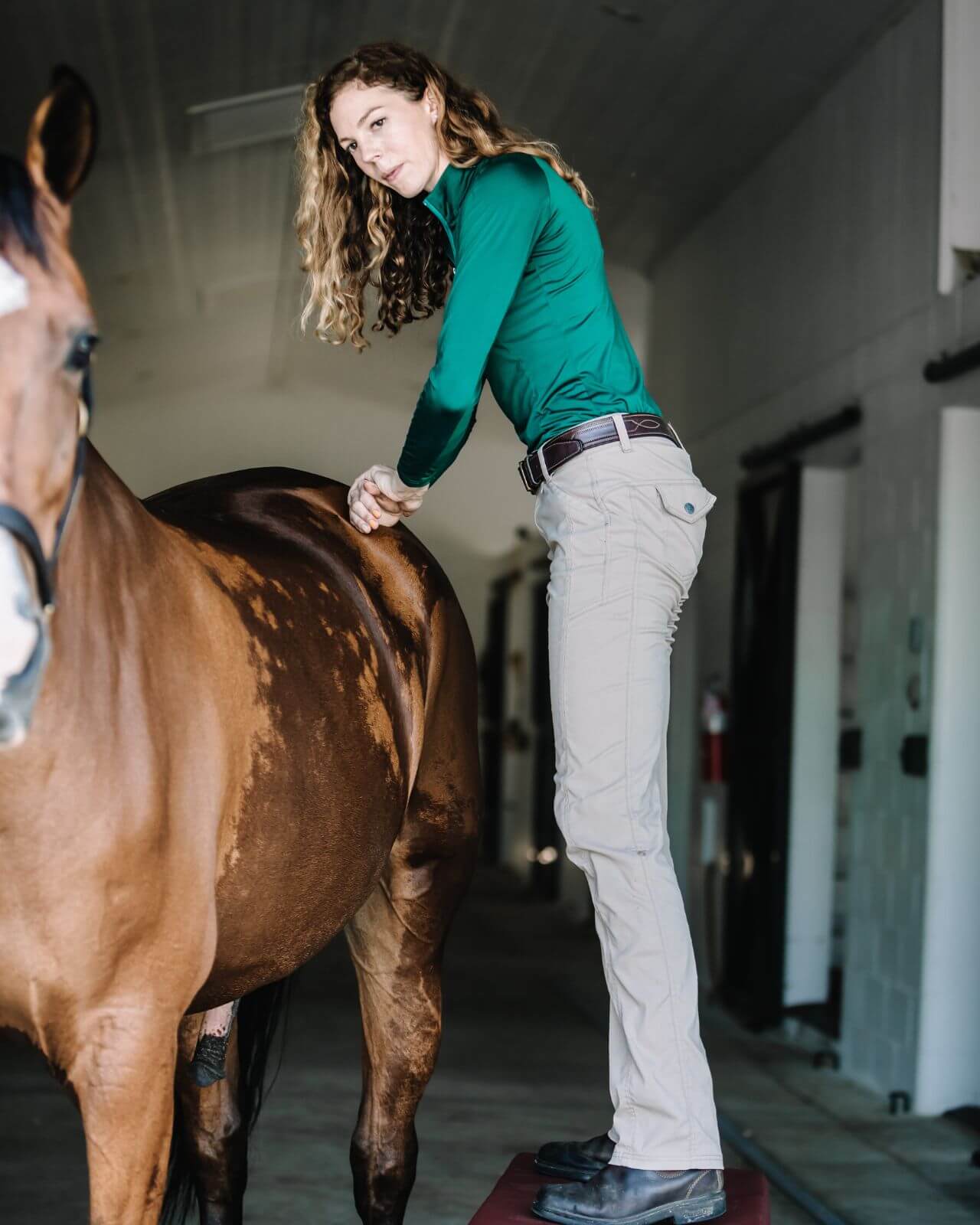
What is Equine Spinal Manipulation Therapy? Is it the same as Chiropractic?
Spinal manipulation is very similar to chiropractic – the examination and manipulations have the same goal, which is to restore normal function and range of motion. The term “chiropractic” is limited to use in human manipulation. When applied to animals, this type of manipulative therapy is correctly called spinal manipulation or veterinary medical manipulation. Spinal manipulation begins with an exam of the equine spine and limb joints to find restrictions or areas of decreased range of motion. Specific manipulations, or adjustments, are then used to restore normal range of motion (ROM) and normal function to the joint(s). These manipulations involve a high velocity, low amplitude (HVLA) thrust directed in the plane of the joint to correctly and safely restore ROM. Specific knowledge of anatomy and extensive training is required to correct a restriction, not extreme strength.
What are Restrictions?
A restriction is an area of the spine or joint that is “restricted” and unable to move. Restrictions are caused by trauma, confinement, exercise, and age. They can be worsened by poor saddle fit, an unbalanced rider, poor hoof balance, and lack of cross-training and/or proper conditioning. Common areas for restrictions include the TMJ, poll, lower neck, back, pelvis and sacrum. Using the terms “out” and “stuck” can be misleading. Adjustments (spinal manipulations) do not actually put bones back into place, but rather free up movement to allow for normal range of motion.
Why do restrictions need to be corrected?
Decreased flexibility, increased stiffness, resistance and often pain are all secondary to the decreased range of motion caused by a restriction. Additionally, misaligned vertebrae can cause problems at the level of the spinal cord, as well as where nerves exit between two vertebrae. This can be very painful. Horses may have a change in posture or compensation to avoid pain, creating further restrictions, additional injuries and/or lameness. Furthermore, information flowing through the nervous system is slowed decreasing the ability of the nervous systems to send and receive information to and from muscles, resulting in missteps/tripping, shortened strides, muscle damage and atrophy, joint and tendon injury, and poor performance.
What are signs my horse has a restriction?
There are many signs of restrictions, but often they involve a painful or compensatory gait or postural change, poor performance and/or refusal to work. Below is a list of some common signs of restrictions:
• Change in behavior or attitude/girthiness, while saddling, riding, etc.
• Change in performance, refusing jumps or changing in jumping style
• Resistance to collect or laterally bend
• Sticking tongue out/avoiding bit contact
• Difficulty with one lead, always landing on the same lead after a jump
• Stiffness, shortened stride, Dragging toes
• Muscle atrophy or poor muscle development
To schedule a Spinal Manipulation Therapy session, please call our Certified Veterinary Medical Manipulation Practitioner, Dr. Madison Berger-Reed directly at 352-598-9558 or the office at 352-368-1616.
